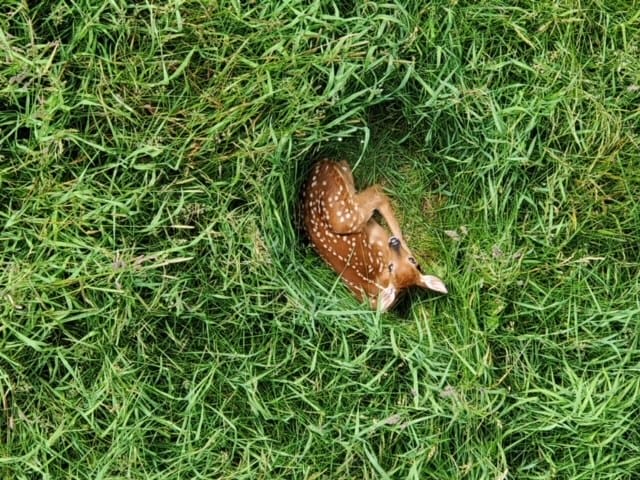What makes Beech Mountain so special is the wilderness of our home. We advocate practicing safe and responsible tourism for the safety of our environment and it’s creatures.
Black Bear
Black bears weigh around 8 oz when they are born, that is the about the size and weight of a stick of butter! Adult males can weigh 600 lbs. and females up to 350 lbs.
Black bears eat mostly plant material, with 75% to 95% of their diet being vegetarian. They will eat the occasional small animal. Hunting requires more energy than these foragers care to expend.
White-Tailed Deer
The white tail of a deer is a built-in alarm system. If you see the white tail of a deer, it is signaling “Danger!” to its herd.
White-tailed deer can jump vertically more than 2.5 m and horizontally 9 m, which is almost the length of a school bus.
Peregrine Falcon
Peregrine falcons, native raptors to our region, have a top recorded speed of 242 mph!
Peregrine Falcons have eyesight that is 8 times better than human eyesight. To us, it’s like seeing a rabbit from 17.6 football fields away.
Groundhog
The name whistle-pig, which is most common in Appalachia, stems from groundhogs’ habit of making a high-pitched whistling sound, usually as a warning to other groundhogs when they feel threatened.
Groundhogs live underground in the burrows that they dig. While hibernating, groundhogs will share their burrow with other animals such as opossums, raccoons, skunks, and foxes, providing refuge from predators and the elements.
Crow
Crows are among the smartest animals in the world, and have been documented building and using tools to find food.
Crows have dialects. If a crow joins a new group, it will mimic the caw sound of the new flock in effort to blend in with its new buddies.
Not only will they hold a grudge against you if you treat them badly, crows will also share it with their neighbors. They’re known to learn about dangerous individuals through social learning and have been known to gang up on persons that other crows had a negative experience with.
Eastern Coyote
The eastern coyote is larger than the western coyote and has slightly more wolf-like features. Why? Recent DNA analysis has shown that as the western coyote spread east, it hybridized with eastern wolves.
Coyotes are very vocal animals, and they have a repertoire of up to 11 different sounds. Two coyotes together can often be mistaken for seven or eight because of the many sounds they are able to make.






